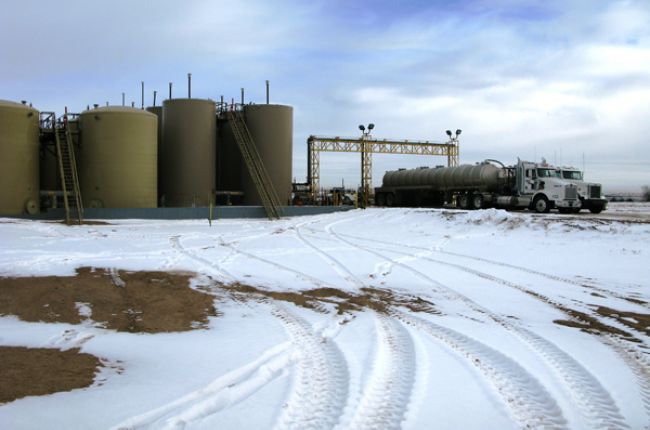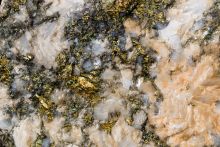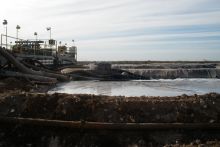
Underground injection wells, where water and/or other substances are injected into the Earth, are used for a wide variety of purposes. The U.S. Environmental Protection Agency (EPA) regulates around 850,000 underground injection wells through its Underground Injection Control program under the Safe Drinking Water Act. The EPA defines six classes of wells based on their use[1]:
Class I – Industrial and municipal waste disposal[2]. These wells are used to dispose of hazardous and non-hazardous waste in very deep rock formations, typically thousands of feet below the surface. The waste comes from a variety of industries, including petroleum refining, commercial waste disposal, municipal wastewater treatment, and the production of food, chemicals, metals, and pharmaceuticals. There are approximately 800 Class I wells in the United States, mostly in the Gulf Coast and Great Lakes areas.
Class II – Oil- and gas-related injection wells[3]. This large category includes wells used to inject fluids associated with oil and gas production. There are roughly 180,000 Class II wells in the United States, which fall into three sub-categories:
- Disposal wells, used to dispose of wastewater from the oil and gas industry, including produced waters that are extracted with the oil and gas and flowback waters that return to the surface after hydraulic fracturing. These account for roughly 20 percent of Class II wells.
- Enhanced recovery wells, used for the injection of fluids into oil-bearing formations to help recover oil (and sometimes natural gas). These account for roughly 80 percent of Class II wells.
- Hydrocarbon storage wells, used for the storage of oil and other liquid hydrocarbons, mostly as part of the U.S. Strategic Petroleum Reserve . There are only 100 or so hydrocarbon storage wells in the United States, accounting for much less than one percent of Class II wells.
Class II wells are used in all oil- and gas-producing states. Although hydraulic fracturing involves using an injection well to increase the recovery of oil and natural gas, most hydraulic fracturing wells are exempt from regulation under the EPA’s Underground Injection Control program. An exception to this is hydraulic fracturing operations that involve the underground injection of diesel fuels; these wells are classified and regulated as Class II wells.
Class III – Injection wells for solution mining[4]. These wells are used to inject fluids that dissolve minerals, allowing the dissolved material to then be pumped to the surface and extracted. This is a particularly common technique in salt and uranium mining, accounting for 50 percent of all salt extraction and 80 percent of uranium extraction in the Unites States. There are approximately 18,500 Class III wells at about 165 sites across the United States. The majority of these are used for uranium mining, around 5 percent are used for salt mining, and a small number are used for copper mining.
Class IV – Shallow hazardous and radioactive injection wells[5]. These wells were used to dispose of radioactive or hazardous waste into or above freshwater aquifers. Because of the possible risk to drinking water supplies, these wells were banned by the EPA in 1984. They are now only used as part of groundwater cleanup efforts. There are fewer than 32 cleanup sites with Class IV wells currently operating in the United States.
Class V – Wells used to inject fluids into or above underground sources of drinking water[6,7]. These are similar to Class IV wells but are not used for the disposal of hazardous wastes. Class V is the broadest and largest class of underground injection wells, with dozens of different well types and over 650,000 active wells across the United States. Almost 90% of Class V wells are either stormwater drainage wells or wells leading to septic systems[8]. Some additional uses of Class V wells include:
- Disposal of residual materials from drinking water treatment
- Disposal of municipal waste
- Geothermal wells for injecting water to be heated and extracted for electric power generation
- Injecting water to be heated or cooled for climate control in buildings
- Aquifer recharge
Class VI – Wells used for geologic sequestration of carbon dioxide[9]. These wells are used to inject carbon dioxide into deep rock formations for long-term storage. This well classification was created in 2011.
Using the EPA’s classifications and guidelines, underground injection control is generally managed and enforced at the state level. Click on the relevant link for more information about underground injection control in your area: Alabama, Arizona, Arkansas, California, Connecticut, Delaware, Florida, Georgia, Hawaii, Idaho, Illinois, Kansas, Louisiana, Maine, Maryland, Massachusetts, Mississippi, Missouri, Navajo Nation, Nebraska, Nevada, New Hampshire, New Jersey, New Mexico, North Carolina, North Dakota, Ohio, Oklahoma, Oregon, Rhode Island, South Carolina, South Dakota, Tennessee, Texas, Utah, Vermont, Washington, West Virginia, Wisconsin, Wyoming.
Can’t see your state above? The EPA directly manages underground injection control programs in many tribal areas and a number of states, including Alaska (except Class II), Colorado (except Class II), the District of Columbia, Indiana (except Class II), Iowa, Kentucky, Michigan, Minnesota, Montana (except Class II), New York, Pennsylvania, and Virginia.
References
1 General Information About Injection Wells Environmental Protection Agency
2 Class I Industrial and Municipal Waste Disposal Wells Environmental Protection Agency
3 Class II Oil and Gas Related Injection Wells Environmental Protection Agency
4 Class III Injection Wells for Solution Mining Environmental Protection Agency
5 Class IV Shallow Hazardous and Radioactive Injection Wells Environmental Protection Agency
6 Basic Information About Class V Wells Environmental Protection Agency
7 Class V Wells for Injection of Non-Hazardous Fluids Into or Above Underground Sources of Drinking Water Environmental Protection Agency
8 More Information about Class V Well Types Environmental Protection Agency
9 Class VI - Wells used for Geologic Sequestration of CO2 Environmental Protection Agency
Learn More:
- Underground Injection Control Program (Website), Environmental Protection Agency
Homepage for the EPA's Underground Injection Control, with links to much more information on the topic
- Underground Injection for Disposal (Factsheet), National Energy Technology Laboratory
Factsheet covering the use of underground injection wells for the disposal of produced water
- Dry Wells for Stormwater Management (Factsheet), American Geosciences Institute
Factsheet covering the use of underground injection wells for stormwater drainage and aquifer recharge
- Carbon Dioxide Capture and Sequestration (Website), Environmental Protection Agency
EPA website on carbon dioxide capture and sequestration (by underground injection)




